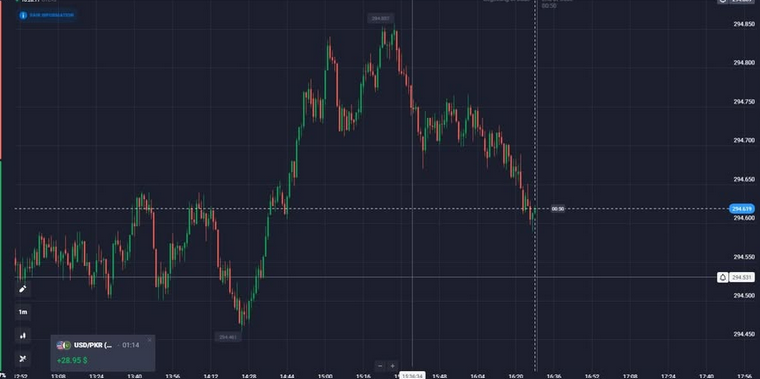Introduction
Traditional cross-border payments have long been plagued by inefficiencies, including high fees, long processing times, and limited accessibility. Businesses and individuals sending money across borders often face intermediary banks, regulatory hurdles, and currency conversion complexities.
With the rise of cryptocurrency and blockchain technology, cross-border transactions are experiencing a transformation. Cryptocurrencies like Bitcoin, Ethereum, and stablecoins offer faster, more cost-effective, and transparent ways to send funds internationally. Decentralized and borderless, crypto transactions are reducing dependency on traditional financial institutions and enabling seamless global payments.
This article explores how cryptocurrency is revolutionizing cross-border payments, its advantages, challenges, and its impact on global trade and remittances.
How Crypto is Transforming Cross-Border Payments
1. Faster Transactions with Lower Fees
✔ Traditional bank transfers via SWIFT can take several days and incur high intermediary fees.
✔ Cryptocurrency transactions settle in minutes, often with minimal transaction fees.
Example: A Bitcoin transfer from the U.S. to Europe can be completed in less than 10 minutes, compared to a 3-day bank wire transfer.
2. Elimination of Intermediaries
✔ Crypto payments occur on decentralized networks, removing the need for banks and clearinghouses.
✔ Direct peer-to-peer transactions reduce reliance on third-party financial institutions.
3. Borderless Accessibility
✔ Crypto enables payments in regions with underdeveloped banking infrastructure.
✔ Digital wallets and blockchain networks allow anyone with an internet connection to send and receive money.
Example: Many businesses in Latin America and Africa use stablecoins like USDT to facilitate international trade without relying on volatile local currencies.
Benefits of Using Crypto for Cross-Border Payments
1. Lower Transaction Costs
✔ Traditional remittance services charge 5-10% fees, while crypto transfers can cost as low as 0.5% or less.
2. Instant and Transparent Transactions
✔ Crypto transactions operate 24/7, unlike bank wires that rely on business hours.
✔ Blockchain provides real-time transaction tracking, ensuring transparency.
3. Protection Against Inflation and Currency Volatility
✔ Businesses and individuals in economically unstable countries use crypto to hedge against inflation.
✔ Stablecoins (e.g., USDC, DAI) maintain value and provide a secure means of international trade.
Challenges of Crypto in Cross-Border Transactions
1. Regulatory Uncertainty
✔ Many governments impose restrictions on crypto transactions, impacting adoption.
✔ Businesses need compliance strategies to navigate evolving regulations.
2. Volatility of Cryptocurrencies
✔ Bitcoin and Ethereum are known for price fluctuations, which can impact transaction value.
✔ Stablecoins offer a solution by maintaining a pegged value to fiat currencies.
3. Adoption Barriers
✔ Many businesses still lack infrastructure to accept crypto payments.
✔ Education and awareness are needed for mass adoption in global trade.
Solution: Platforms like Paragonix PrimeX provide resources and tools for businesses to navigate crypto payments efficiently.
Use Cases of Crypto Cross-Border Payments
1. International Trade and E-Commerce
✔ Companies accept crypto for faster and cheaper global transactions.
✔ Example: Shopify merchants integrating Bitcoin and Ethereum payments to sell globally.
2. Remittances for Migrant Workers
✔ Migrants send money home without high remittance fees from services like Western Union.
✔ Example: In 2022, El Salvador adopted Bitcoin for remittances, reducing transaction costs.
3. Smart Contracts for Cross-Border Business Transactions
✔ Automate and secure international payments with smart contracts.
✔ Example: Supply chain companies use Ethereum-based contracts for seamless trade.
FAQ: Crypto Cross-Border Payments
1. How do crypto cross-border payments work?
✔ They use blockchain networks to transfer value directly between wallets, bypassing banks.
2. Are crypto payments faster than traditional wire transfers?
✔ Yes. While bank transfers take 2-5 days, crypto transactions settle in minutes.
3. What is the biggest advantage of using crypto for international payments?
✔ Lower fees, faster processing, and decentralization, eliminating intermediaries.
4. Are there risks in using crypto for cross-border transactions?
✔ Regulatory uncertainty and volatility can impact transactions, but stablecoins help mitigate risks.
5. Can businesses accept crypto for international transactions?
✔ Yes. Many businesses integrate crypto payment gateways to receive global payments.
6. How can I start using crypto for cross-border payments?
✔ Use secure wallets and platforms like Paragonix PrimeX for optimized transactions.
7. Do crypto payments avoid currency exchange fees?
✔ Yes. Stablecoins eliminate conversion fees, offering a more cost-effective solution.
8. Will crypto replace traditional international payment systems?
✔ While adoption is growing, regulatory and infrastructure challenges still exist.
Conclusion
Cryptocurrency is revolutionizing cross-border payments by eliminating intermediaries, reducing costs, and enabling instant transactions. Businesses and individuals benefit from faster, cheaper, and decentralized payment solutions, offering an alternative to traditional banking systems.
Despite regulatory challenges and adoption barriers, crypto payments are gaining traction, especially in global trade, remittances, and e-commerce. As blockchain technology evolves, solutions like Paragonix PrimeX provide valuable insights and tools for businesses looking to leverage crypto for international transactions. 🚀



















